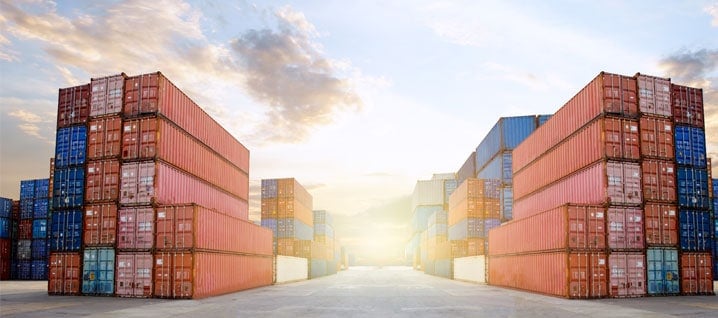The container shipping industry involves many companies operating in various environments, attempting to move goods as cost-efficiently and as quickly as possible. The industry is a huge business and is set to grow according to consumer demand, and advances in technology are crucial to meeting customer expectations.
Keeping abreast of the following global trends could help you thrive in a fast-paced environment.
1. Increases in Port Utilization
There has been a substantial increase in the building of mega-ships, which can carry large cargo amounts. While it may seem favorable to transport as much merchandise as possible on one ship, it creates practical, logistical difficulties for ports, including the use of additional tug boats. Loading and unloading times increase, creating a backlog for other vessels needing to dock with their cargo and increasing demurrage costs.
Also, not all ports and terminals can accommodate the larger ships’ dimensions, making it more difficult to deliver goods to certain areas. Ports may need to increase capacity or increase in number to accommodate a broader range of container ships. The largest current shipping port is in Shanghai, China, with an incredible 37.13 million TEU capacity.
For the shipping market to benefit, it is important that the companies with the largest ships can not negotiate more favorable rates than anyone else. So, there must be an appropriate number of adaptable ports for many ship sizes so all shipping companies can compete equally.
2. New Markets
Demand in the container shipping industry continues to grow as increasing globalization brings new markets. Population growth continues to expand, producing new customers for companies that now have a global reach. The United Nations (UN) predicts a global population growth from 7.7 billion in 2019 to 11.2 billion by the end of the century.
While there is likely to be growth in some global trade areas and decline in others, there is always a significant increase in people who need goods and supplies. This high demand requires new routes to emerging markets, improvements in supply chains, and greater capacity to carry larger loads.
The container shipping industry must adapt to keep pace with markets that require rapid access to commodities. The belt and road initiative, which aims to help China connect with other markets, is just one example of policies that could fuel global economic growth.
3. The Popularity of Using Containers
The shipping industry is a vital part of the logistics chain and uses containers for their versatility and convenience. As they are robust and protect goods, companies can stack pallets with different SKUs, and it is possible to transport a variety of products from various companies in one container.
One of the most significant benefits of using containers is that they increase stock accessibility, so one container can hold many goods for distribution to multiple locations.
Some industries, such as the paper business, are adapting the size of their merchandise to fit a container’s dimensions. Manufacturers adapting their products to fit a container’s dimensions is a relatively new concept; however, it could be set to grow due to the significant cost-savings for carrier and supplier when shipping a full container load.
4. Reducing Carbon Footprints
Being environmentally-friendly in maritime trade is an essential aim for every shipping company. By reducing their carbon footprint, companies show their commitment to the environment, find more efficient ways of transporting goods, and potentially gain new customers who share the same desire to save the earth.
Shipping companies are exploring new ship designs, including modern propellers and rudder systems, that can increase fuel efficiency and reduce emissions. Fuel efficiency isn’t the only aspect of shipping that impacts the environment; disposal of decommissioned ships generates a staggering amount of waste, so many companies are implementing green ship recycling to reuse valuable ship components.
Increased demand from consumers and substantial trade growth have also forced governments to implement strict environmental policies to reduce the damage of the marine environment. These policies could affect how shipping lines operate in the future.
5. Advancements in Technology
It wasn’t long ago that unmanned cars seemed a fanciful idea, but now they are a reality. Global container shipping could soon see crewless ships, which could reduce freight rates and increase container shipping’s ability to cope with an increase in supply and demand.
Computers, remotely controlled by terminal operators, can work 24/7 and plot the most effective route even while outside conditions are rapidly changing. Companies could increase their market share by reducing staffing costs, increasing their ability to compete in the world trade market of physical commodities.

The Bottom Line
The container shipping industry is one of the most competitive sectors in the world. Transporting goods is fraught with difficulties relating to port size, the weather, unexpected backlogs, scheduling, and costing.
Customers often look for the best price, overlooking the importance of paying a fair premium for a quality service. The emerging global trends may see prices fluctuate until the market settles. Keeping informed makes it possible to get the best deals, work with the most reliable supplies, and ultimately increase your bottom line.
At Asiana USA, we work with experienced and professional container shippers who deliver on time at an affordable price. For a free consultation and quote, contact us at (855) 500-1808.





